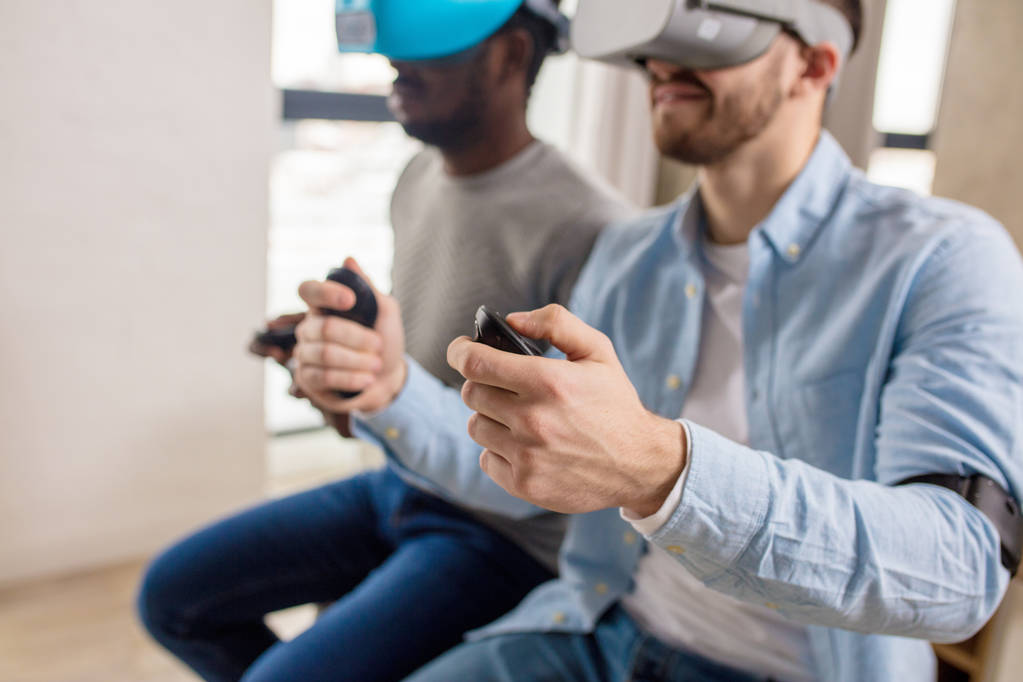Augmented Reality (AR) is a fascinating technology that enhances the real-world environment by overlaying digital elements like sounds, images, and videos. But how exactly does an AR app work, and why is it becoming so popular?
Let’s break it down simply, so you can get a clear understanding without the tech jargon.
How Does an AR App Work?
An AR app uses your smartphone’s camera to see the real world and layers virtual information on top of it. Imagine pointing your phone at an empty table and seeing a virtual coffee cup appear on the screen as if it’s really there. That’s AR in action.
The technology relies on several key components:
- Camera and Sensors: These help the app understand the physical environment.
- AR Software: This processes the data and creates the digital overlay.
- User Interface: Allows you to interact with the virtual elements.
Different Types of AR Apps

There are several types of AR apps, each designed for different uses. Here are some common examples:
- Marker-Based AR: This type of AR uses specific patterns (markers) like QR codes to trigger the digital overlay.
- Markerless AR: No special markers are needed; instead, the app uses GPS, accelerometers, or gyroscopes to detect where to place virtual objects.
- Superimposition-Based AR: In this case, virtual objects are placed on top of real-world objects, such as trying on virtual sunglasses.
- Projection-Based AR: This type projects digital light onto a surface, commonly used in exhibitions or interactive displays.
Why Are AR Apps Becoming So Popular?

The popularity of AR apps is growing for a few key reasons:
- Interactive Experience: AR makes experiences more engaging, allowing users to interact with both real and virtual worlds simultaneously.
- Entertainment: From games like Pokémon Go to Snapchat filters, AR adds an extra layer of fun to the digital experience.
- Education and Training: AR is being used in fields like healthcare (especially clinical trials in Asia) and engineering to offer realistic simulations, making learning more effective.
Real Examples of AR Apps
To see how AR apps are used today, here are a few popular examples:
- IKEA Place: This app lets you visualize how furniture will look in your home before buying it.
- Snapchat Filters: These use AR to add fun animations to your selfies in real time.
- Google Lens: This tool helps you identify objects, plants, and animals by simply pointing your camera at them.
Benefits of AR Apps for Businesses
Businesses are finding creative ways to use AR apps to enhance customer experience, boost engagement, and even drive sales. Here’s how:
- Improved Shopping Experience: Retailers offer “try-before-you-buy” experiences, such as virtual fitting rooms.
- Enhanced Marketing: Companies use AR in advertisements to create interactive and engaging campaigns.
- Training and Education: Businesses use AR to train employees in a safe, controlled environment without real-world risks.
Features an AR App

Not all AR apps are created equal, so if you’re planning to use or develop one, here are some features to consider:
- Ease of Use: A good AR app should be simple to navigate, allowing users to interact with the virtual environment effortlessly.
- Accuracy: The virtual elements should blend seamlessly with the real world, without lag or distortion.
- Compatibility: Make sure the app works across multiple devices and operating systems.
- Low Latency: Quick response time is essential for a smooth user experience, especially in real-time applications like gaming or navigation.
Challenges in AR App Development
Despite its exciting potential, AR comes with some challenges that developers must consider:
- Technical Limitations: AR apps rely heavily on hardware like cameras and sensors. Not all devices are equipped to handle AR, which limits the audience.
- User Privacy: Since AR apps often collect data about the physical environment, developers must be cautious about user privacy and data security.
- Battery Drain: AR apps can quickly drain a device’s battery due to their heavy processing requirements.
Future Trends in AR Technology

As AR continues to evolve, here are some trends to watch:
- 5G Integration: With faster internet speeds, AR apps will be able to deliver even more immersive experiences without lag.
- Wearable AR: Devices like AR glasses make waves, offering hands-free augmented experiences.
- AR in Education: The use of AR in classrooms and online learning will expand, helping students understand complex subjects in a visual, interactive way.
- Improved Mapping and Navigation: AR will become an essential tool for enhanced navigation, offering real-time directions overlaid on the real-world view.
How to Get Started Guide with AR Apps
If you’re new to AR and want to explore its potential, getting started is easier than you think. Here are a few steps to guide you:
- Choose the Right Device: Ensure your smartphone or tablet supports AR applications. iOS and Android have specific apps like ARKit (iOS) and ARCore (Android) for this purpose.
- Install AR Apps: Start with popular and easy-to-use AR apps such as Google Lens, IKEA Place, or Pokémon Go to familiarize yourself with the technology.
- Explore Use Cases: Whether you’re a gamer, shopper, or learner, find an AR app that suits your interests. If you’re a business owner, explore AR for marketing or training.
- Stay Updated: AR technology is constantly evolving, so keep an eye on the latest developments and updates to get the most out of your experience.
The Difference Between AR and VR
Many people confuse Augmented Reality (AR) with Virtual Reality (VR), but they’re quite different technologies. Here’s how:
- AR (Augmented Reality) enhances your real-world surroundings by overlaying digital elements on top of them. It doesn’t replace the real world, just adds to it.
- VR (Virtual Reality) immerses you in a completely virtual environment, cutting off the real world altogether. Think of wearing a headset that transports you to a new digital space.
Conclusion
Augmented Reality apps are reshaping the way we interact with the world around us. From enhancing shopping experiences to providing immersive training simulations, AR is proving to be more than just a trend, it’s a tool with real-world applications. Whether you’re using AR for fun, work, or education, there’s no denying that it’s making our digital and physical worlds merge in exciting new ways.
FAQs – Important FAQs Reviews
1. What devices can run AR apps?
Most modern smartphones and tablets support AR apps, particularly those equipped with ARKit (iOS) or ARCore (Android).
2. Can AR apps be used for education?
Yes, AR is increasingly being used for educational purposes, offering students interactive and visual learning experiences.
3. Are AR apps expensive to develop?
The cost of developing an AR app can vary widely based on the complexity and features. Simple apps can be relatively affordable, while more advanced AR experiences can be costly.
4. Do AR apps work offline?
Some AR apps may work offline, but many require an internet connection for optimal performance, particularly those that rely on cloud-based data.
5. What’s the future of AR apps?
The future of AR includes integration with 5G, wearable devices like AR glasses, and increased use in fields like education, healthcare, and retail.



One thought on “What is Augmented Reality App – AR App?”